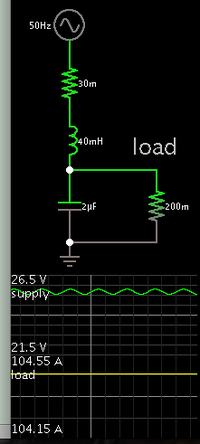balagbc
Junior Member level 2
hi folks,
my voltage(24v,100A) circuit producing 5v ripple i couldnt reduce the ripple voltage.if i use this voltage my equipment surely ll get damage . so wht i should do now ? how to reduce the ripple voltage ? capacitance in parallel not helping me ?pls suggest anyother method any other method?
my voltage(24v,100A) circuit producing 5v ripple i couldnt reduce the ripple voltage.if i use this voltage my equipment surely ll get damage . so wht i should do now ? how to reduce the ripple voltage ? capacitance in parallel not helping me ?pls suggest anyother method any other method?
